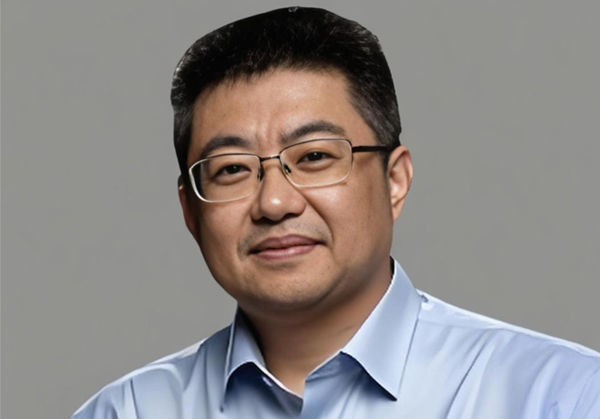Biography
Deputy director, Faculty of Science, Peking University (2022-now)
Principal Investigator, Biomedical Pioneering Innovation Center, Peking University (2013-now)
Cheung Kong Professor, College of Chemistry and Molecular Engineering, Peking University (2010-now)
Assistant Professor, Texas A&M University(2004-2010)
Postdoctoral Research Fellow, Harvard University (2002-2004)
Postdoctoral Research Fellow, California Institute of Technology (2001- 2002)
Ph.D., California Institute of Technology (2001)
M.S., Institute of Chemistry, Chinese Academy of Sciences (1996)
B.S., Sichuan University (1993)
Research Interests
Dynamics calculations for solvation effects in chemical and enzymatic reactions
Developing efficient molecular dynamics simulation software package in conjunction with deep learning
Machine-learning based protein sequence generation and improvement on protein structure prediction
Organization principle of 3D chromatin and effects on gene regulation
Chromatin structure and epigenetic changes in cancer
Teaching
PhysicalChemistry
Awards
2023 Beijing Advanced Science and Technology Worker, Beijing Municipal Association of Science and Technology
2023 Top 10 Pioneering Cases of Artificial Intelligence, Artificial Intelligence Industry Alliance of China
2023 New Cornerstone Investigator, New Cornerstone Science Foundation
2023 AI Dean's Summit Best Innovative Collaboration Award, Huawei Cloud Computing Co. Ltd.
2022 Beijing Outstanding Undergraduate Thesis Supervisor Award, Beijing Municipal Commission of Education
2022 Outstanding Instructor Award for Undergraduate Research Training, Peking University
2022 Ascend MVP, Huawei Technologies Co. Ltd.
2021Outstanding Instructor Award for Undergraduate Research Training, Peking University
2018 China's 10 top scientific advances of 2018, Ministry of Science and Technology, China
2016 Pople Medal, Asia-Pacific Association of Theoretical and Computational Chemists
2015 SUSTC Chemical Sciences Lectureship, Department of Chemistry, South University of Science and Technology of China
2015 Most Popular Course Award, College of Chemistry and Molecular Engineering, Peking University
2015 Innovation Award for Young and Mid-Career Scientists, Ministry of Science and Technology, China
2014 Promising Scientist Prize of CMOA (Centre de MécaniqueOndulatoireAppliquée), 国际QSCP(Quantum Systems in Chemistry and Physics)组织
2014 Distinguished Lecturer Award, Chemical Society of Japan
2012 NSFC Outstanding Young Investigator Award
2011 Zhongchenyulan Award, College of Chemistry and Molecular Engineering, Peking University
2008 Cheung Kong Scholar,The Chinese Ministry of Education
2006 Searle Scholar, Kinship Foundation
2004 Camille and Henry Dreyfus New Faculty Award, The Camille and Henry Dreyfus Foundation
2001 Milton and Francis Clauser Prize for the Best Doctoral Thesis, Caltech
2001 Herbert Newby McCoy Award, Caltech
1998 Li Ming Scholarship, Caltech
1998 Chinese-American Engineers and Scientists Association Scholarship
Selected Publications
Huang, Y. P.; Xia, Y. J.; Yang, L. J.; Wei, J. C.; Yang, Y. I.; Gao*, Y. Q., SPONGE: A GPU-Accelerated Molecular Dynamics Package with Enhanced Sampling and AI-Driven Algorithms. Chinese Journal of Chemistry 2022, 40 (1), 160-168.
Xue, Y.; Yang, Y.; Tian, H.; Quan, H.; Liu, S. R.; Zhang, L.; Yang, L.; Zhu, H. C.; Wu, H.; Gao*, Y. Q., Computational characterization of domain-segregated 3D chromatin structure and segmented DNA methylation status in carcinogenesis. Molecular Oncology 2022, 16 (3), 699-716.
He, Y.; Xue, Y.; Wang, J.; Huang, Y.; Liu, L.; Huang, Y.; Gao*, Y. Q., Diffusion-enhanced characterization of 3D chromatin structure reveals its linkage to gene regulatory networks and the interactome. Genome Research 2023, 33 (8), 1354-1368.
Huang, Y. P.; Zhang, H.; Jiang, S. Y.; Yue, D. J.; Lin, X. H.; Zhang, J.; Gao*, Y. Q., DSDP: A Blind Docking Strategy Accelerated by GPUs. Journal of Chemical Information and Modeling 2023, 63 (14), 4355-4363.
Wang, J.; Xue, Y.; He, Y.; Quan, H.; Zhang, J.; Gao*, Y. Q., Characterization of network hierarchy reflects cell state specificity in genome organization. Genome Research 2023, 33 (2), 247-260.
Zhang, J.; Chen, D. C.; Xia, Y. J.; Huang, Y. P.; Lin, X. H.; Han, X.; Ni, N. X.; Wang, Z. D.; Yu, F.; Yang, L. J.; Yang*, Y. I.; Gao*, Y. Q., Artificial Intelligence Enhanced Molecular Simulations. Journal of Chemical Theory and Computation 2023, 19 (14), 4338-4350.
Zhang, J.; Liu, S.; Chen, M.; Chu, H.; Wang, M.; Wang, Z.; Yu, J.; Ni, N.; Yu, F.; Chen, D.; Yang, Y. I.; Xue, B.; Yang, L.; Liu, Y.; Gao*, Y. Q., Unsupervisedly Prompting AlphaFold2 for Accurate Few-Shot Protein Structure Prediction. Journal of Chemical Theory and Computation 2023, 19 (22), 8460-8471.
Feng, S. H.; Chen, Z. Y.; Zhang, C. W.; Xie, Y. H.; Ovchinnikov*, S.; Gao*, Y. Q.; Liu*, S. R., Integrated structure prediction of protein-protein docking with experimental restraints using ColabDock (vol 6, pg 924, 2024). Nature Machine Intelligence 2024, 6 (10), 1270-1270.
Han, X.; Sun, T. Y.; Yang, Y. I.; Zhang, J.; Qiu, J.; Xiong, Z. P.; Qiao, N.; Wu*, Y. D.; Gao*, Y. Q., Enhanced Sampling Simulations on Transition-Metal-Catalyzed Organic Reactions: Zirconocene-Catalyzed Propylene Polymerization and Sharpless Epoxidation. CCS Chemistry 2024, 6 (4), 964-975.
Tian, Y.; Song, Y. Z.; Xia, Y. J.; Hong, J. N.; Huang, Y. P.; Ma, R. Z.; You, S. F.; Guan, D.; Cao, D. Y.; Zhao, M. Z.; Chen, J.; Song, C.; Liu, K. H.; Xu*, L. M.; Gao*, Y. Q.; Wang*, E. G.; Jiang*, Y., Nanoscale one-dimensional close packing of interfacial alkali ions driven by water-mediated attraction. Nature Nanotechnology 2024, 19 (4), 479-484.

